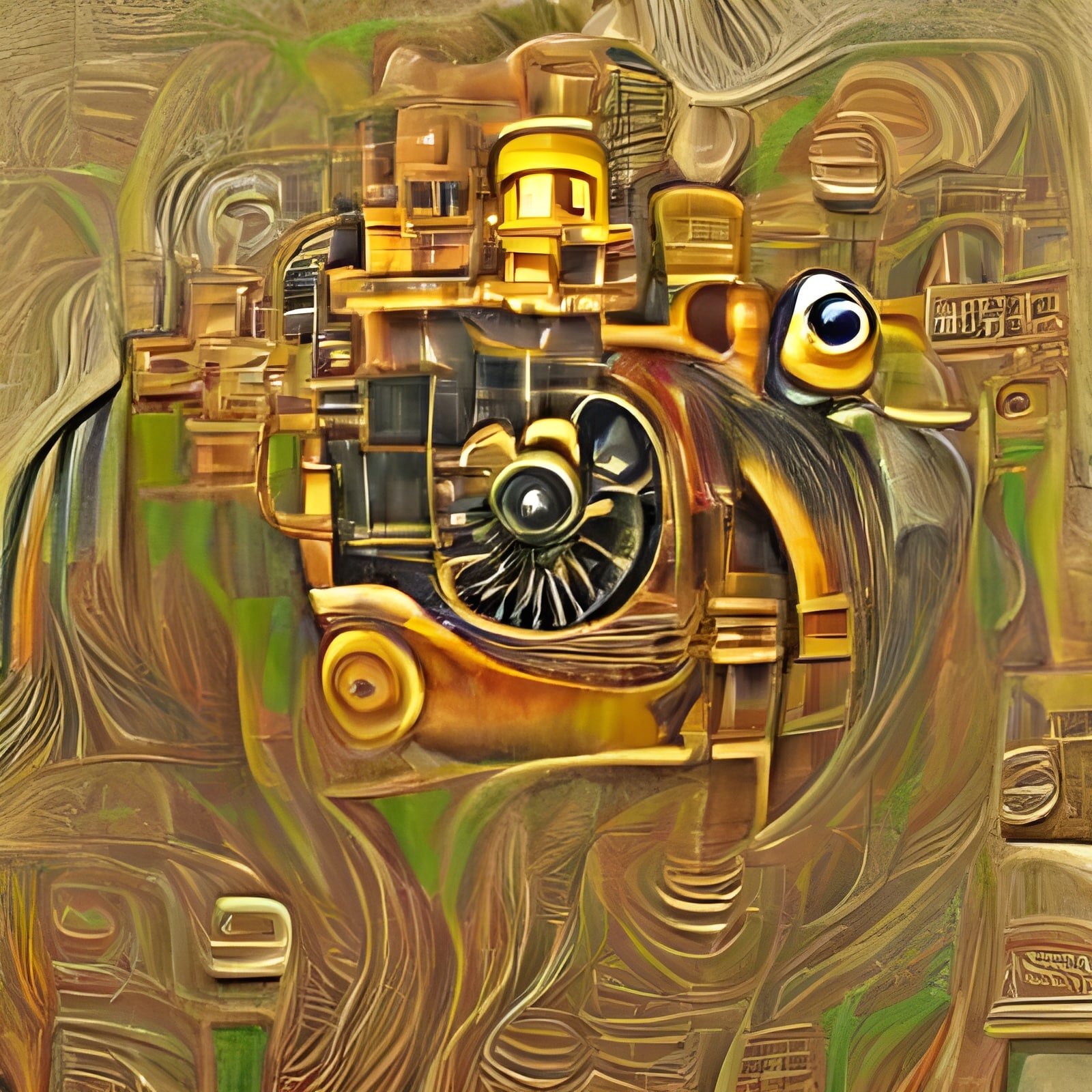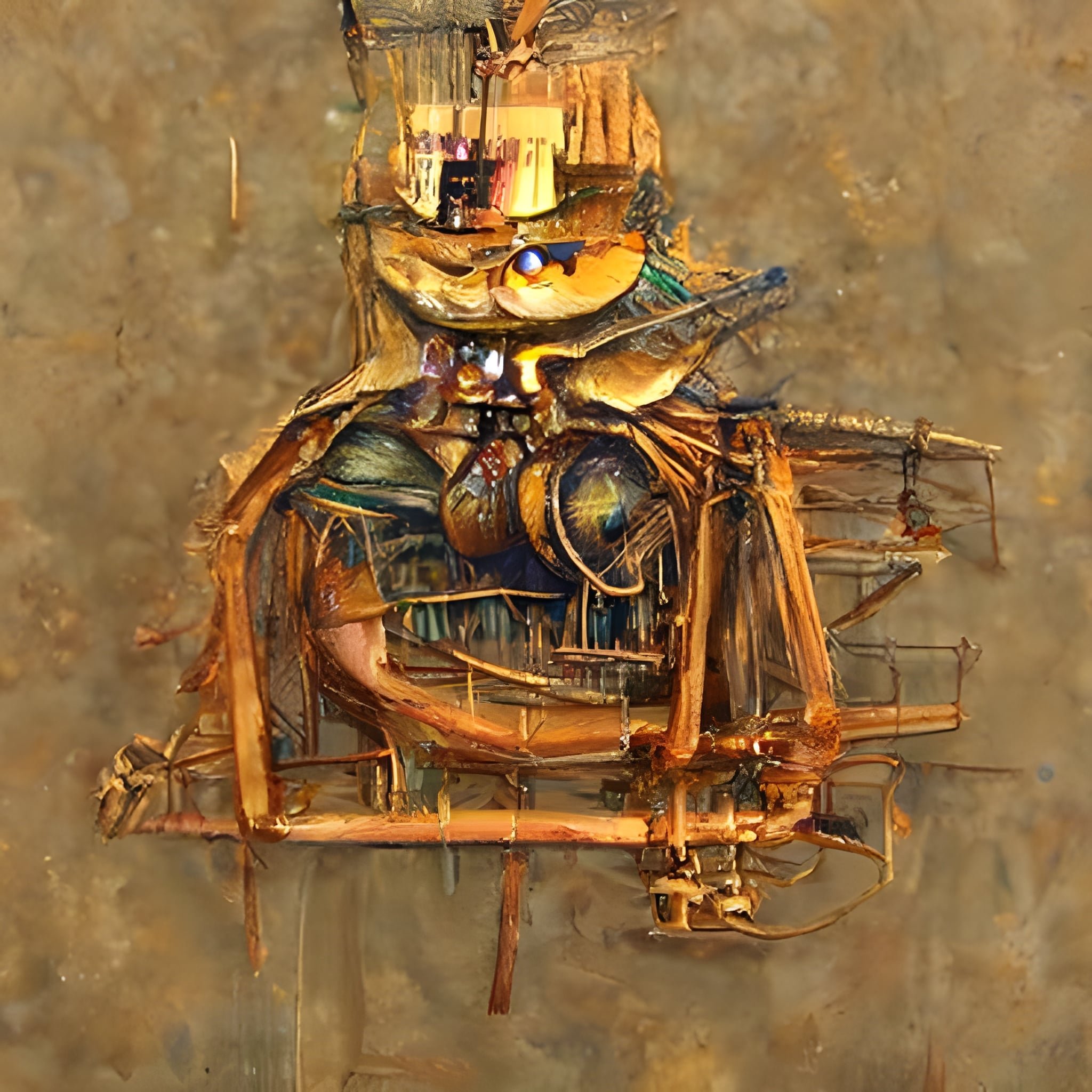Is AI ready to create all artwork for this blog?
TL;DR Digital artists will need to embrace AI.
★★★★★
Created: 2022-08-05, Last Update: 2023-12-26
This abstract artwork was created by NightCafe.
Watch an AI read this post for you.
Do you have a knack for design? Are your skills in creating the perfect poster, flyer, or social media graphic unmatched? Well, guess what? You’re going to be replaced by a computer. Artificial intelligence is getting better and better at creating graphics, and soon your job will be done by a machine. Don’t worry though – you can still use your creative talents in other ways! There are plenty of other careers that need your skills – just think about how you can use them to help people and businesses communicate and execute their ideas. So don’t stress – AI is coming for your job, but that doesn’t mean you won’t have one anymore.
All images on this website were created by an AI
I know what you're thinking. "Wait a minute, all images on this AI blog were created by artificial intelligence? Are you sure?" And to that, I say, "Yes, of course, I am sure." Why would you even doubt me? Anyway, as crazy as it may sound, it's true. Every image on this website (excluding the ones we have licensed from other sources) was created by some algorithm or another.
So why did we go and do something like that? Well, there are a few reasons. For one, it was a challenge for us and we love challenges. But more importantly, we believe that artificial intelligence is going to play a big role in art and media in the years to come and we wanted to be at the forefront of that trend.
So what do you think? Is this the beginning of the end for artists or is AI just providing us with a new tool to help us create better art? Let us know in the comments below!
If you're like me, you've probably seen those AI-generated images online and been blown away by how realistic they look. But what you may not know is that there are many different AI algorithms and systems for creating new images. So, which one is the best? In upcoming posts, I'll compare three of the most popular image generation algorithms – GANs, VAEs, … – and see which one comes out on top. Stay tuned!
AI-Generated Mona Lisa
-
The Mona Lisa, known as "Gioconda" in Italian or "Joconde" in French, is a renowned portrait painting created by the Italian artist, Leonardo da Vinci. This half-length portrait is considered a quintessential masterpiece of the Italian Renaissance. Its fame stems from its status as the most recognized, visited, discussed, celebrated, and parodied artwork worldwide. The painting's unique attributes include the subject's mysterious expression, the grandeur of the composition, the delicate modeling of forms, and atmospheric illusionism.
The subject of the painting has been definitively identified as the Italian noblewoman, Lisa del Giocondo. The portrait was painted using oil on a white Lombardy poplar panel. Interestingly, Leonardo never handed over the painting to the Giocondo family. It's speculated that he left it to his favored apprentice, Salaì, in his will. While it's widely believed that the painting was created between 1503 and 1506, it's possible that Leonardo continued working on it until as late as 1517. The painting was subsequently acquired by King Francis I of France and is now owned by the French Republic. Since 1797, it has been on permanent display at the Louvre Museum in Paris.
Are graphics designers doomed?
Do you like playing video games? Well, you can thank a graphics designer for that. Do you enjoy looking at pretty pictures on Instagram? You can thank a graphics designer for that too. Pretty much everything that has to do with visuals in the world today is thanks to the hard work of these professionals. But, as technology continues to advance, the need for a graphics designer is slowly starting to disappear. So what does this mean for the future of the profession? It’s over, cya at adult re-education class!
When was digital art invented?
The term "digital art" is usually applied to artistic work that uses digital technologies as an essential part of the creative process. The invention of digital art as a field is closely tied to the development of computing technology, particularly graphical displays.
The earliest forms of digital art can be traced back to the 1960s and 1970s when artists began experimenting with computer programming, plotter drawing machines, and early graphic software to create artworks. Early pioneers in this field include Michael Noll, Vera Molnar, and Frieder Nake.
For example, one of the earliest known pieces of digital art is a work called "Human Figure" by Michael Noll, created in 1960 using a random-dot stereogram. Another early example is the work of Frieder Nake, who used a plotter and a computer to create geometrical patterns in 1963.
It is important to note that digital art has evolved dramatically since these early days, as technology has advanced and become more accessible. The term now encompasses many artistic practices, including digital painting, digital sculpture, digital installation art, digital performance art, and much more.
How does AI create art?
AI creates art through a process called Generative Art, where machine learning algorithms are used to generate new creative outputs. This process typically involves the following steps:
Dataset Selection: A dataset of existing artwork is selected that the machine learning algorithm can use to learn the style and patterns of the art.
Training: The machine learning algorithm is trained on the images in the dataset. This involves feeding the images through a neural network, which learns the features and patterns common to the dataset's art.
Generation: After the machine learning algorithm has been trained, it can be used to generate new art. This involves inputting a random seed or a desired input and letting the algorithm create an output based on the patterns and features it has learned from the training data.
Refinement: The generated artwork is often refined using additional algorithms and techniques, such as style transfer or image filtering, to create a final image that is more aesthetically pleasing.
There are several common ways to create art using AI, including:
Use an AI art generator: These generators use machine learning algorithms and deep neural networks to generate new artwork based on a given input, such as a text description or an image.
Modify existing art using AI: Existing artwork can be modified using AI tools. For example, a style transfer algorithm could be used to transfer the style of one image onto another or use an image filtering algorithm to create a new version of an existing image.
Collaborate with an AI: Artists can create art by collaborating with an AI system. This can involve using an AI system to generate a set of possible designs or elements, and then selecting the ones they find most interesting to incorporate into their artwork.
Use AI to assist with the creation process: AI can also help with various aspects of the creative process, such as generating color palettes, suggesting compositions, or even creating rough sketches based on a set of parameters.
The purpose of AI art can be multifaceted, often used to explore the creative potential of machine learning and deep neural networks, create new forms of artistic expression, critique or comment on the role of technology in society, or provide a new way of experiencing art.
As for the question of whether AI-generated art is truly "art," it's still a subject of debate. Some argue that true art must involve human creativity, intention, and expression, while others believe AI-generated art is a valid new form of artistic expression.
It's worth noting that creating an AI art generator can be quite technical and may require a solid background in machine learning. The process involves defining the scope of the project, collecting and preprocessing data, training the model, generating images, and refining the images.




